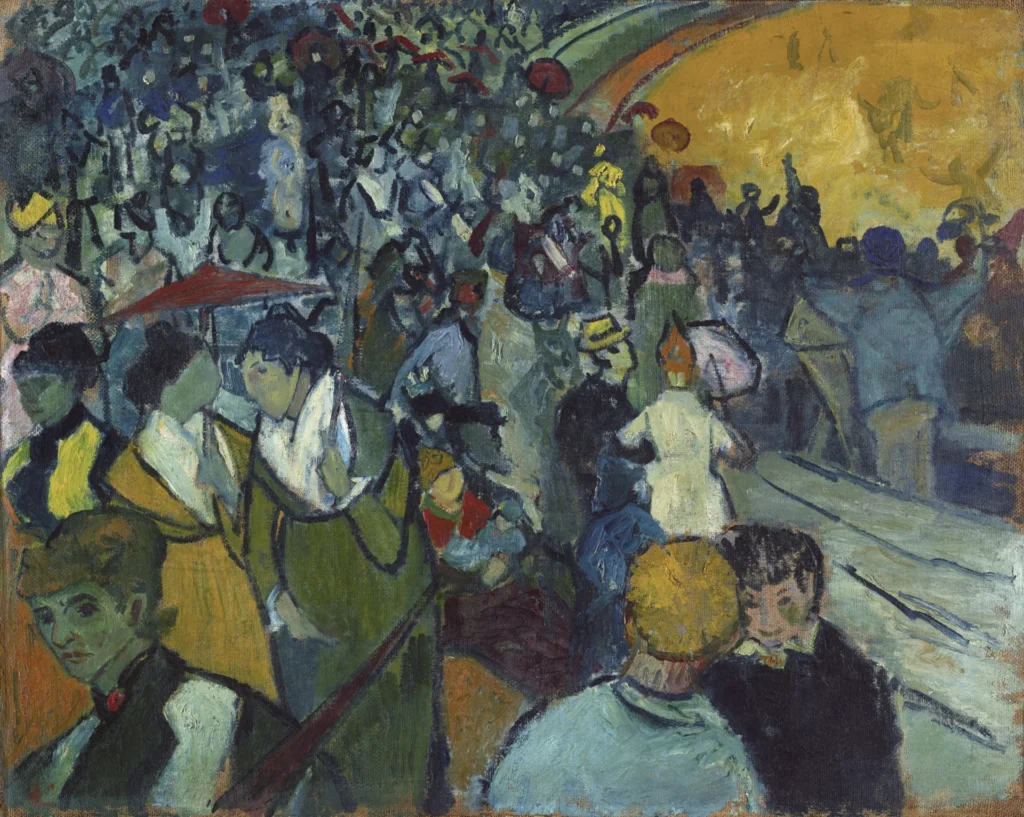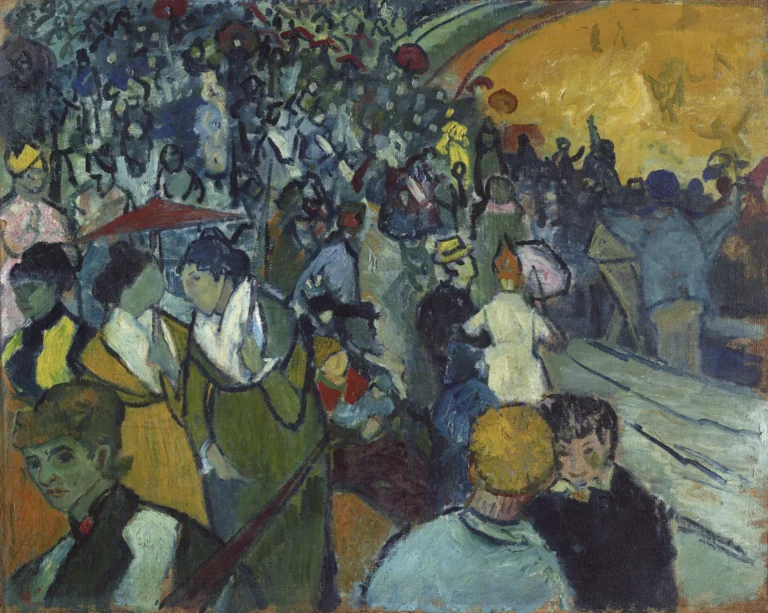Les Arènes (1888)
Vincent van Gogh's Les Arènes, painted in late 1888, captures the thrilling essence of bullfighting from his memory rather than direct observation. This oil on canvas artwork, measuring 73.5 cm by 91.5 cm, serves as a poignant reminder of Van Gogh's life in Arles, particularly during the time shared with Paul Gauguin at The Yellow House. The work incorporates figures from the Roulin family and reflects the emotional intensity that marked Van Gogh's life, notably in its connection to bullfighting culture and his later struggles.
Late 19th Century, specifically November or December 1888
About the Artwork
Les Arènes represents a fascinating chapter in Vincent van Gogh’s life and work. Created during the autumn of 1888, this piece illustrates the bullfighting season that captivated the artist's imagination and often sent him spiraling into deep emotional states. Living with Paul Gauguin in Arles, Van Gogh sought to express his experiences through vivid colors and brush strokes. The figures depicted—a blend of friends and local culture—offer a glimpse into his world. Notably, Van Gogh may have drawn inspiration from the duality of life and death embodied in the bullfights, a theme which took on a darker reflection after his infamous incident of cutting off his own ear, potentially linked to the customs surrounding bullfighting.
Did You Know
Van Gogh often painted members of the Roulin family, who were his close friends in Arles. They were significant muses for him, appearing in various works which reflect his admiration for their personalities and regional culture.
Paul Gauguin’s presence in The Yellow House greatly influenced Van Gogh’s artistic approach during this period. Gauguin encouraged him to pursue a more expressive and less realistic style, which can be seen in the techniques utilized in ‘Les Arènes.’
The thematic link between bullfighting and Van Gogh’s struggles is profound, especially considering his mental health decline. The severing of a bull’s ear after defeat resonates deeply with the artist’s own incident, creating a chilling undertone to Les Arènes that reflects his inner turmoil.










